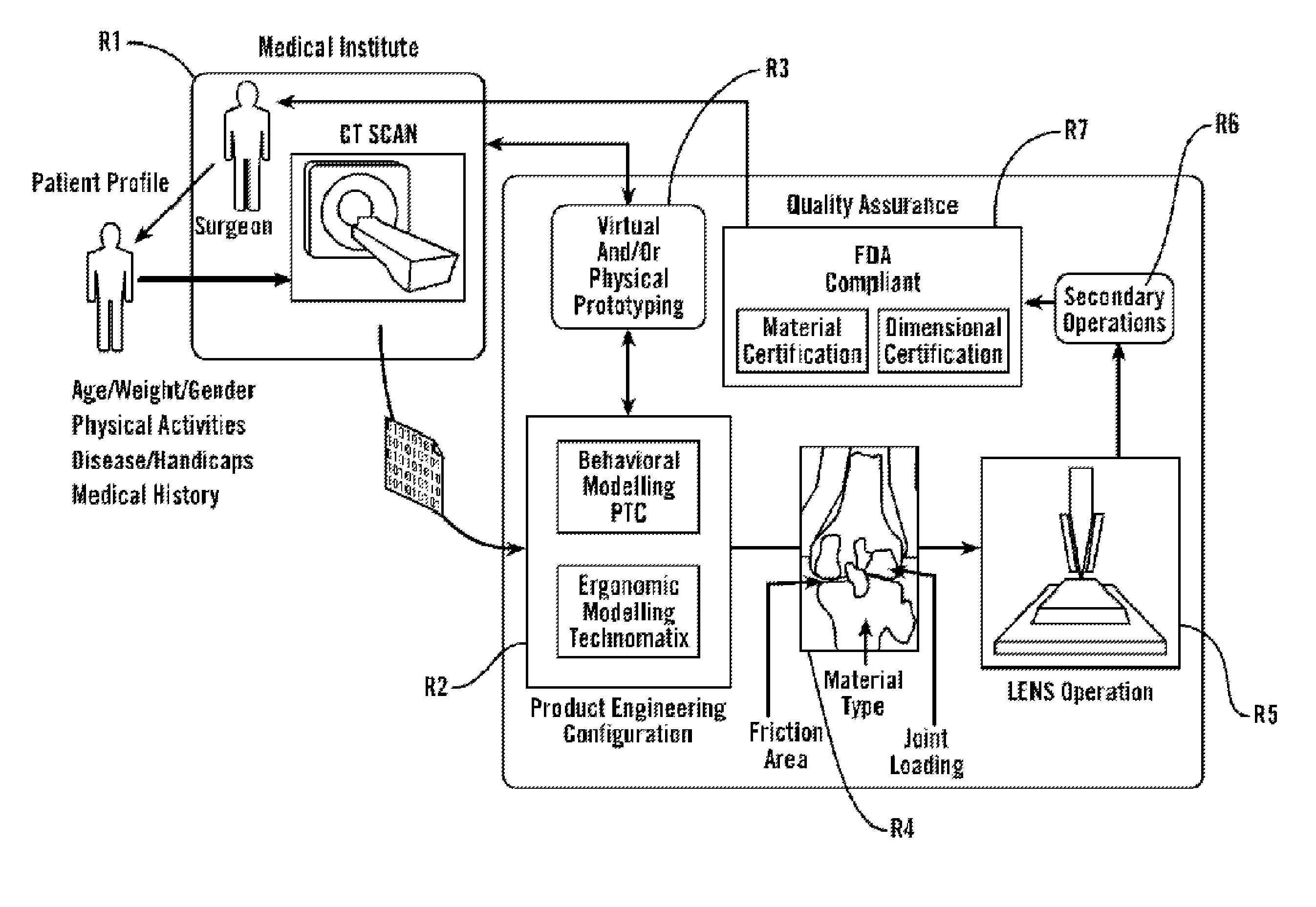Personalized fit and functional designed medical prostheses and surgical instruments and methods for making
a technology of fit and function, applied in the direction of prosthesis, configuration cad, instruments, etc., to achieve the effect of stabilizing the device within the bone, and avoiding the use of cement or other adhesives or fillers
- Summary
- Abstract
- Description
- Claims
- Application Information
AI Technical Summary
Benefits of technology
Problems solved by technology
Method used
Image
Examples
examples
Exemplary Embodiments
[0084]This Exemplary Embodiment and Examples I through IV describe a first embodiment of the invention and examples V through XI describe a second embodiment of the invention.
[0085]As shown in FIG. 1, in some embodiments, the present invention provides methods and tools to produce implantable medical devices that will precisely fit individual subjects. The present invention also comprises medical appliances and tools and implements designed and created through the disclosed process. In some embodiments, the invention is implemented through a combination of technologies including medical imaging (including CT, MRI, PET, X-ray, ultrasound, and others) and subject consultation (R1). Next, the product engineering configuration (R2) analysis is implemented using both behavioral modeling and ergonomic modeling analysis. Next, virtual and / or physical prototyping is performed (R3) which allows for validation of the product engineering results by further reference with (...
example i
Image Acquisition and Analysis
First Embodiment
[0087]As shown in FIGS. 2A and 2B, in some embodiments, the process starts with step S1 where the subject's demographic information is recorded and the clinician makes a request for imaging, S2. 3-Dimensional image data is obtained from the subject S4 and presented for clinical evaluation with the cooperation of multiple specialists, S3 and using the invention described herein (FIGS. 1 and 2A). This uses multiple steps as listed in Table 1, and further elaborated below.
[0088]
TABLE 1Image Acquisition and Analysis1CT / MRI Image calibration2Calibration of laser surface contour scanning to determine surfacestructure as required for certain applications3Physical correlation of pixel data for precise reconstruction of thesubject's anatomical structure4In situ validation5Establish protocol for image acquisition and transport6Troubleshooting of various imaging parameters - SIze, intensity,orientation, spacing, etc.7Image file format, size, and tr...
example ii
Production
First Embodiment
[0111]In some embodiments, the design created above is produced using direct computer aided manufacturing (CAM) digital methods to produce the implant with laser-based additive free-form manufacturing as described above, S33. In some embodiments, production of each component is performed with the desired material or materials directly from powdered metals (and certain other materials) that are delivered to the desired spatial location and then laser annealed in place (using, for example, DMD, LENS or the like) or annealed using an electron beam (EBM). This produces a very high strength fine-grain structure, enables the production of internal features, enables layers of multiple materials, gradients of material properties, inclusion of ancillary internal elements, and produces resultant structures that generally require minimal post-production processing.
[0112]In some embodiments, multiple materials are applied sequentially, locally, and in specific location...
PUM
 Login to View More
Login to View More Abstract
Description
Claims
Application Information
 Login to View More
Login to View More - R&D
- Intellectual Property
- Life Sciences
- Materials
- Tech Scout
- Unparalleled Data Quality
- Higher Quality Content
- 60% Fewer Hallucinations
Browse by: Latest US Patents, China's latest patents, Technical Efficacy Thesaurus, Application Domain, Technology Topic, Popular Technical Reports.
© 2025 PatSnap. All rights reserved.Legal|Privacy policy|Modern Slavery Act Transparency Statement|Sitemap|About US| Contact US: help@patsnap.com



